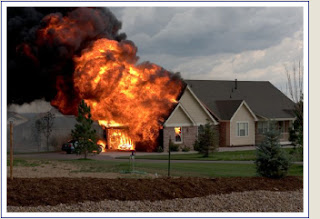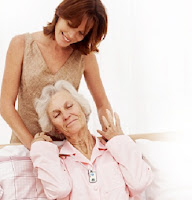Protecting Your Home in the Richmond Area
How Residential Alarm Systems Operate
Residential alarm systems are powered by a main control panel that is connected to keypads located throughout the home. The control panel is connected to different types of sensors which detect an intrusion. The system can be “turned on” at different levels, for example when the home is vacant or when the residents are home.
When an intrusion is detected, the control panel sounds the emergency siren and simultaneously sends an emergency signal to our alarm monitoring station, which notifies the appropriate authorities.
How Most Are Designed
Most alarm systems utilize a combination of sensors depending on the home’s specific entry points and vulnerable areas. Detection coverage includes sensors that detect entry to perimeter points like a door or a window, and also secondary coverage that detects movement within the house. Most system designs consider the home’s architectural conditions, the extent of protection desired by the homeowner and any special needs of the home’s residents, such as a physical handicap, etc.
Common Components of a Home Security System
Most home security systems are made up of the following components. They are selected to provide both perimeter and back-up interior signals after an intrusion occurs, and in recognition of the areas of the home that are most vulnerable and likely to be chosen by an intruder.
- System control panel: This is the brain of the home security system and is installated within a protected area of the home
- Keypads: These units are used to operate the system and are located at the home’s most frequently used point of entry and within a bedroom area to accommodate nightly use. Keypads also contain provisions to send a variety of emergency signals including the need for police, fire and medical emergency personnel.
- Interior sounder: This device creates a varied number of audible signals and English language messages indicating the type and source of the emergency. This device helps inform the home’s occupants while also warning the intruder(s) that they have been detected.
- Door – window opening sensor: Used to detect the opening of a specific door or window when an intrusion occurs.
- Motion sensor: Placed strategically within areas of the home to detect an intruder’s presence within that area. Motion sensors are commonly used to create subsequent signals within the home, after a door or window sensor has been activated.
- FOB – wireless unit: Used to operate the system from outside the home and to send panic – emergency signals should the user become concerned within the immediate area outside the home.
- Security screen: These devices replace the common window screens provided by window manufacturers with one that has sensors to distinguish either the cutting or removal of the screen.
- Glass breakage detectors: Used to detect the breakage of glass during the act of an intrusion.
- Emergency pendant: This device is worn on the wrist of a person, like a wristwatch, or as a necklace, and is used to signal the need for medical assistance from within or outside the immediate home.
Optimize Your Fire Protection
 Today, most homes are equipped with some form of smoke detection, such as battery-powered or 110 volt-electrically powered units. However, these units are designed primarily to alert and help evacuate people when a fire begins while they are home. What if one begins when you’re NOT there, or when your children or pets are home alone? How do you protect them?
Today, most homes are equipped with some form of smoke detection, such as battery-powered or 110 volt-electrically powered units. However, these units are designed primarily to alert and help evacuate people when a fire begins while they are home. What if one begins when you’re NOT there, or when your children or pets are home alone? How do you protect them?Monitored Fire Alarm Services
Vector Security’s monitored smoke detectors finish performing the job, when stand-alone detectors fall critically short. Not only do monitored smoke detectors sound an alarm inside the home when they activate, but they ALSO send an emergency fire signal to our central station, clearly indicating there’s a fire on site.
Our central station operators then take over and communicate directly with the home to see if anyone’s there, while simultaneously dispatching the fire department. They can help minimize fire damage and save lives in ways that stand-alone detectors can’t.
Vector Security monitored smoke detectors can be used to either replace or augment your stand-alone smoke detectors.
Smoke Detector Locations
Residential construction codes generally require that one smoke detector be installed on each floor of the home, subject to specific spacing requirements, except for the attic.
One smoke detector installed in each bedroom.
A smoke detector should also be installed in each hallway where the bedrooms are located.
Please Note: Please check with your local Fire Marshal or AHJ (Authority Having Jurisdiction) for the appropriate residential smoke detector coverage for your area.
You’re Connected 24 Hours a Day
Vector Security offers a number of innovative and comforting ways to be “connected” to us 24 hours a day. These services begin with the activation of any emergency sensor included in your Vector Security system, but continue further to include various ways to request help and assistance at any time of the day.
2-Way Voice Communication
Wouldn’t it be reassuring to know that Vector Security’s central station operators could communicate directly with persons within the home; asking if everything is OK, or if they needed assistance from anyone? This service is highly appealing to virtually anyone. It places our customers in direct communication with our trained central station operators when it counts most.
Please Note: 2-way voice communication is limited to areas inside the home that are equipped with specialized speakers and cannot be provided outside the home.
 Medical Alert, Personal Emergency Response System (PERS):
Medical Alert, Personal Emergency Response System (PERS):Some people want the peace of mind of having immediate communications with our central station, but do not want a full-scale home security system.
Vector Security provides a comprehensive Personal Emergency Response System suited for the needs of anyone coming home from the hospital; someone who suffers from a medical condition that may require immediate assistance; or for the elderly or anyone with mobility challenges.



No comments:
Post a Comment